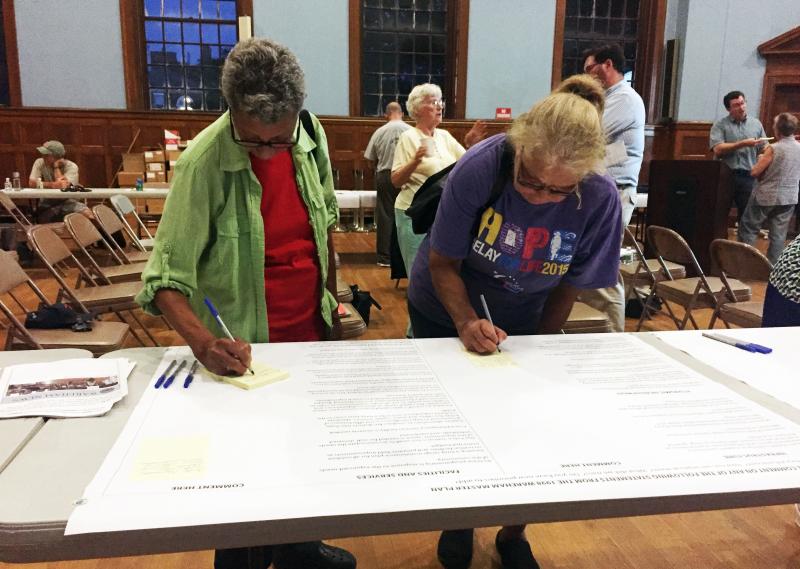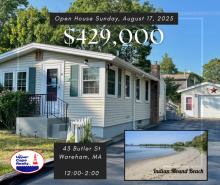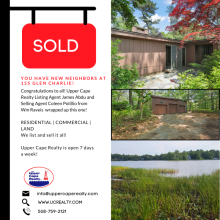Vision for updated master plan grows clearer with workshop exercises
The second workshop revamping Wareham's master plan asked residents what their ideal Wareham newspaper headline in 2027 would say. The master plan has not been updated since 1998, when typically a town's master plan is revised every five to 10 years.
A master plan addresses a community’s goals for land use, housing, climate change, economic development, services and facilities, transportation, open space and recreation and natural and cultural resources. Having a master plan in place means town officials can work from a shared vision for the community and makes the town eligible for certain state grants.
This was the second meeting to update the master plan. The first was held in June and the third and final meeting will be held within the next six weeks, according to Director of Planning and Community Development Ken Buckland.
The workshop was led by representatives from the Southeastern Regional Planning and Economic Development District (SRPEDD), which is based in Taunton and helps with community planning in 27 cities and towns. SRPEDD helps towns understand their goals and priorities, gather and analyze information and create a master plan that corresponds with those goals.
“Think of it as a recipe or instruction manual the town is going to follow over the next five to 10 years,” explained Grant King, the principal comprehensive planner and information specialist for SRPEDD.
SRPEDD compiled the feedback from the June workshop and used it to identify six major themes of what Wareham residents want to get out of a new master plan. These key points were:
- Wareham residents, businesses and institutions must collaborate to improve the town’s appearance, to protect its natural resources and to build on its strong local character.
- The town can amend and streamline its regulations to improve outcomes for residents and businesses.
- Wareham needs more traditional economic development- high value development and high wage jobs.
- Housing needs require a wide variety of strategies.
- Ensure that the master plan is clear and easy to implement.
- Specialized plans and active program participation will be necessary to achieve goals and address needs.
Though Buckland said the 1998 master plan was “pretty darn good,” he said it lacked steps to implement the ideas it contained. He hopes the new master plan will include strategies for making people’s visions become a reality.
“Tonight we’re going to have you as the editors of the master plan,” Buckland told the group in the Town Hall auditorium. The current master plan, written nearly two decades ago, was printed out on large pieces of paper with space for people to write comments and suggestions to revise it.
Buckland encouraged people to write their aspirations for the future: “Where you want to go as a community and what you want to become.”
The master plan workshop in June focused on data, said King, but Thursday’s meeting was more about creativity. Participants were asked to write a headline in less than 10 words, describing their hopes for Wareham 10 years from now as a result of this master plan.
Several dozen workshop attendees wrote their thoughts on Post-it Notes and stuck them to the current master plan, noting what is still relevant, what can be improved and new priorities to add.
Seil Dodson, who has lived in Wareham for 18 years, left plenty of notes on the current master plan during the workshop.
“I care about keeping some open space in town,” Dodson said. “I don’t want to see Wareham become a city...I want it to keep its charm and quaintness.”
Buckland said he hopes the draft of the updated master plan will be complete by November. The master plan will be “short, concise, graphically pleasing and easily implementable,” King said.
“This master plan is going to hit the ground running,” King said.
For more information on Wareham’s master plan or to submit comments, visit www.srpedd.org/Wareham-Master-Plan or “Wareham Master Plan” on Facebook.















